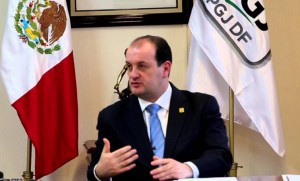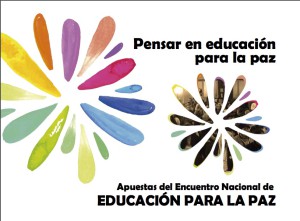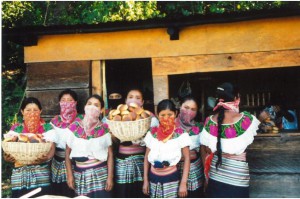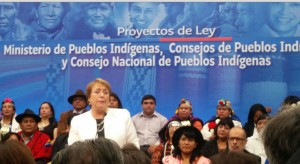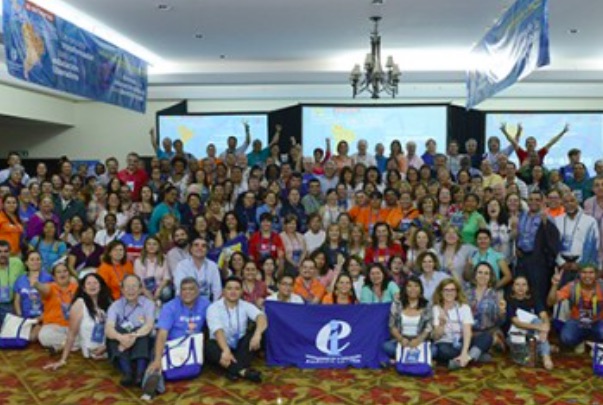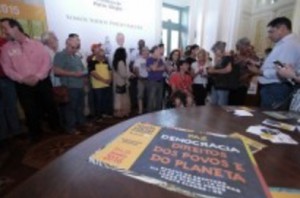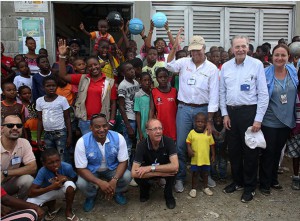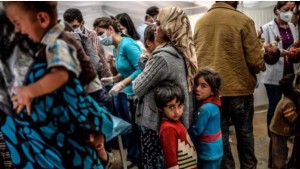FREE FLOW OF INFORMATION
Taken from Deutsche Welle (translated by CPNN)
The following is a chronology of the highlights of the peace process begun three years ago and culminating in March. The countdown starts from the expected date for the final signing.
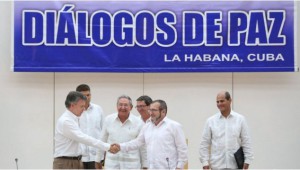
Juan Manuel Santos shakes hands with Timochenko in Havana during the peace dialogus. Photo by Reuters
The Government of Colombia and the FARC negotiated in Havana, Cuba an accord to end the armed conflict after more than half a century that has cost the lives of 220,000 people, has left about 7 million victims, 62% of its territory affected by landmines and incalculable damage to the environment due to massive clearing for coca cultivation, illegal mining and attacks on the national pipeline.
Five points are on the table: agrarian reform, abandoning arms, political participation of the ex-insurgents, drug trafficking and reparation for victims. Additional agreements concern implementation, verification and countersignature of the accords.
2 0 1 6
March 23: Expected date for final signing of the peace process
January 13: The negotiating teams of the Government of Colombia and the FARC began the last stage of the peace talks, which will work in permanent session to accelerate the process and meet deadlines.
2 0 1 5
December 15: Agreement about victims including a comprehensive system for reparation, justice, truth and guarantees of non-repetition. This step was, according to President Juan Manuel Santos, “the most important advance in the negotiating agenda.”
November 22: The Colombian government announced pardon of 30 FARC prisoners in different jails for the crime of rebellion.
November 10: “Timoshenko”, spokesman of the FARC, announced that on September 30 he ordered all structures of the guerrillas to suspend arms purchases in order to reduce the intensity of the armed conflict.
October 28: President Santos said the government and the FARC can reach an agreement to start a bilateral ceasefire before January 1, 2016, to which the FARC suggest to start before Christmas.
October 23: The High Commissioner for Peace of Colombia, Sergio Jaramillo said the FARC promised to deliver remains of people who died when they were in their possession for which they have the support of the International Committee of the Red Cross (ICRC ).
October 17: The government and the FARC announced an agreement to jointly seek more than 25,000 people who have been reported missing by various sources as a result of the armed conflict.
(article continued on the right side of the page)
(click here for the Spanish version of this article.)
Question for this article:
What is happening in Colombia, Is peace possible?
See the CPNN bulletin for September 1, 2015, concerning the Colombia Peace Process.
(article continued from the left side of the page)
October 10: FARC spokesman Timoshenko stated that the FARC must suspend recruitment in order to facilitate the peace process.
September 23: President Santos met in Havana with the FARC leader, Rodrigo Londoño, alias “Timoshenko”. They made an historic handshake and agreed that peace will be signed no later than March 23, 2016, after presentation of the basic agreement on justice.
September 15: The government presented to Congress a legislative bill to facilitate rapid implementation of peace agreements.
July 10: The negotiators announced a plan to reduce the intensity of the conflict and accelerate the achievement of agreements that allow reaching a bilateral and definitive cease-fire.
June 4: The parties agreed to the creation of a Truth Commission that will be launched when peace is signed.
March 7: The government and the FARC announced an agreement for joint humanitarian de-mining.
2014
December 17: The FARC announced an indefinite cease unilateral ceasefire starting on December 20.
August 16: A first group of twelve victims of armed conflict met with the negotiators, followed by another four groups totalling 60 people.
June 7: The government and the FARC announced that five delegations of victims would attending hearings with negotiators in Cuba over the coming months.
May 16: The Government and FARC reached an agreement on drug trafficking and illegal crops, the third item on the agenda.
2 0 1 3
May 26: The government and the FARC announced the first agreement of the negotiating agenda at the point of land and rural development.
August 20: The FARC acknowledged for the first time their “share of responsibility” for the casualties caused by the armed conflict.
November 6: The parties announced the second agreement of the five items on the agenda, political participation of the guerrillas.
2 0 1 2
October 17: Government negotiators and the FARC established in Oslo that the roundtable would begin in Havana the following month.
August 26: Start of negotiations for the final signing of the peace process. Government delegates and the FARC decided that Havana would be the host for negotiations towards a “General Agreement ending the conflict and building a stable and lasting peace” with the support of Cuba and Norway as guarantors.

